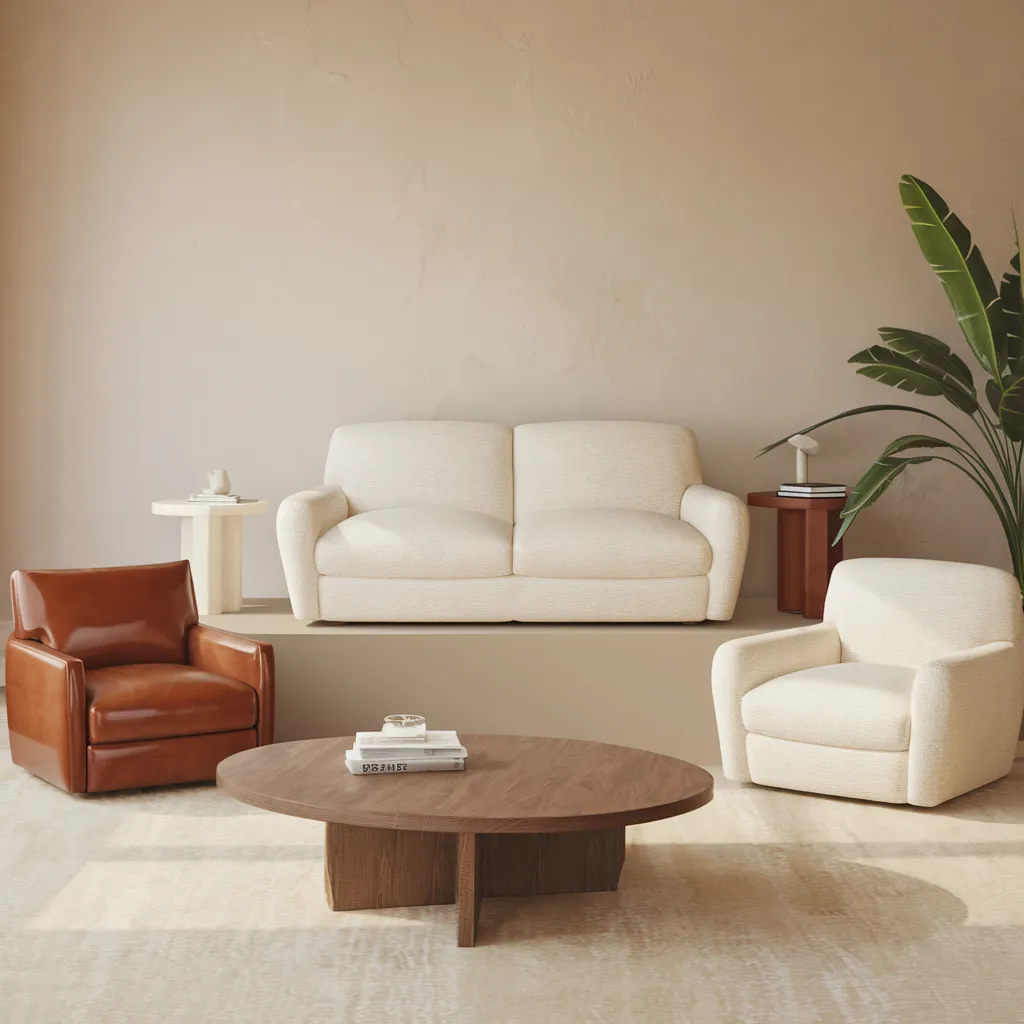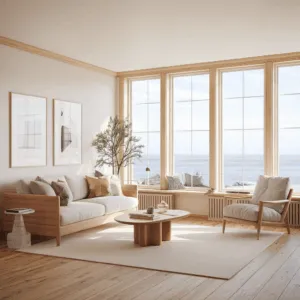When it comes to creating a harmonious living space, one simple rule can make all the difference. Unveil the four-inch seating secret that’s taking the interior design world by storm.
Seating Secrets: The Four-Inch Rule
In the realm of interior design, a subtle yet powerful guideline has emerged, captivating designers and homeowners alike. Known as the ‘Four-Inch Rule,’ this principle suggests that the height difference between sofas and chairs within the same living room should not exceed four inches. Its purpose? To create a visually cohesive and inviting atmosphere that fosters effortless conversation. When seating heights are mismatched, the room’s proportions can feel disrupted, and the flow of conversation may become awkward. Monika Puccio, an interior expert and head sofa buyer at Sofa Club, emphasizes the importance of this rule, stating, ‘Adhering to the four-inch guideline ensures the space feels intentional and can help make an open-concept area feel cozier.‘ This rule is particularly recommended for larger, open spaces where the entire area should feel cohesive and harmonious.
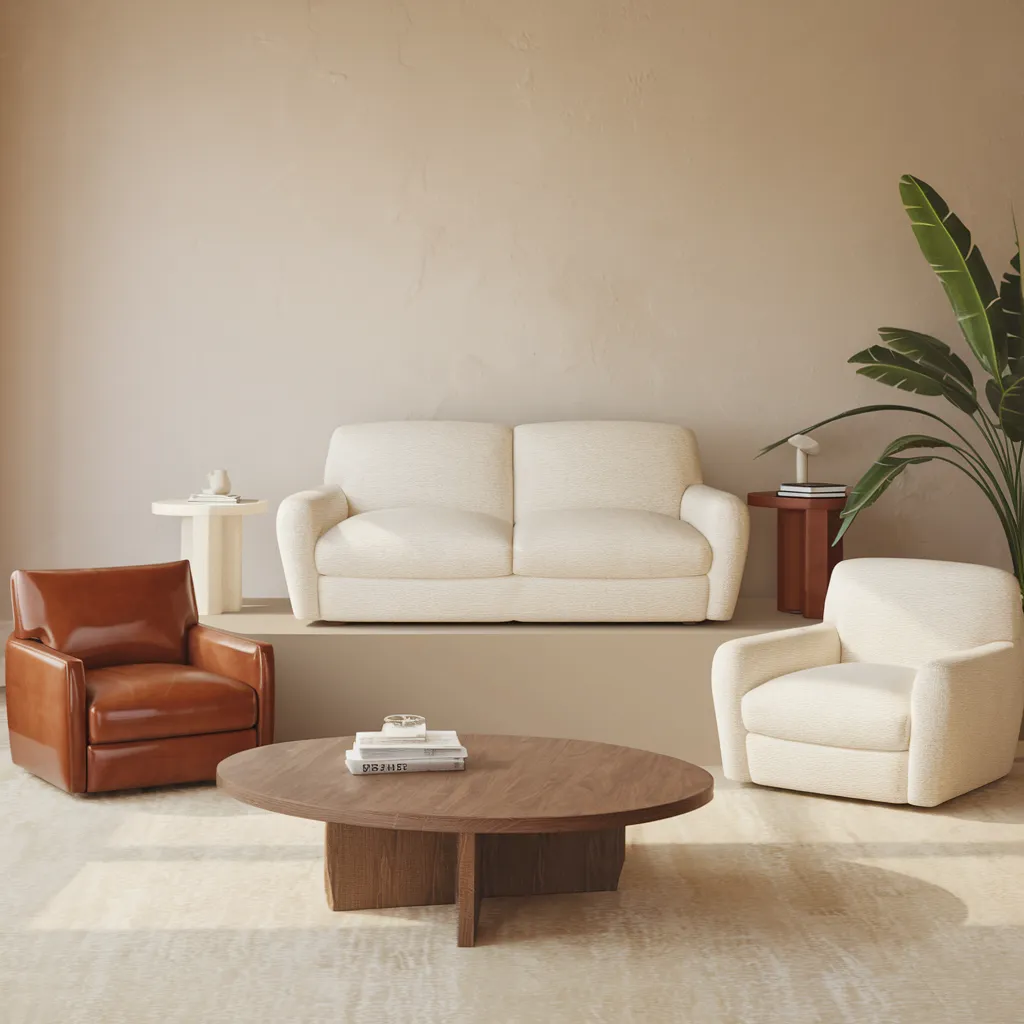
A serene and airy living space showcases comfortable rounded seating in off-white upholstery alongside a warm caramel leather chair. Embracing soft neutrals and clean lines, the area elegantly demonstrates how deliberate furniture spacing enhances both aesthetics and comfort.
Crafting Cozy Conversations: Why Seating Height Matters
The four-inch rule is more than just a design trend; it’s a practical solution to a common problem. When seating heights are vastly different, it can create an uncomfortable dynamic during conversations. Imagine trying to engage in a lively discussion while perched on a low sofa, craning your neck to make eye contact with someone seated in a towering armchair. Not only is it physically straining, but it can also disrupt the natural flow of conversation. By adhering to the four-inch guideline, designers ensure that all seating options are within a comfortable range, allowing for effortless eye contact and a more relaxed, intimate atmosphere. This attention to detail can transform a living room from a mere collection of furniture into a warm, inviting space that encourages meaningful connections.

In this cozy loft-inspired seating arrangement, two individuals comfortably converse in oversized wingback chairs upholstered in complementary neutral and teal tones. The rustic brick walls, warm lighting, and thoughtful spacing between chairs perfectly illustrate the practical elegance of the Four-Inch Rule, prioritizing both comfort and interaction.
Bending the Rules: When to Embrace Unconventional Seating
While the four-inch rule is a valuable guideline, it’s not a one-size-fits-all solution. In certain scenarios, designers may choose to intentionally deviate from this principle to achieve a specific aesthetic or functional purpose. For instance, when creating multiple zones within a room, such as a cozy reading nook or a sunken conversation pit, mixing sofa and chair heights can be an effective way to delineate these distinct areas. Additionally, the rule can be disregarded when incorporating curved sofas and furniture that naturally blur the lines of formal rules, favoring softer silhouettes and organic shapes. Long and low furniture pieces are often used to illustrate a specific visual effect or design aesthetic, like the sleek lines of mid-century modern or the minimalist elegance of contemporary styles.
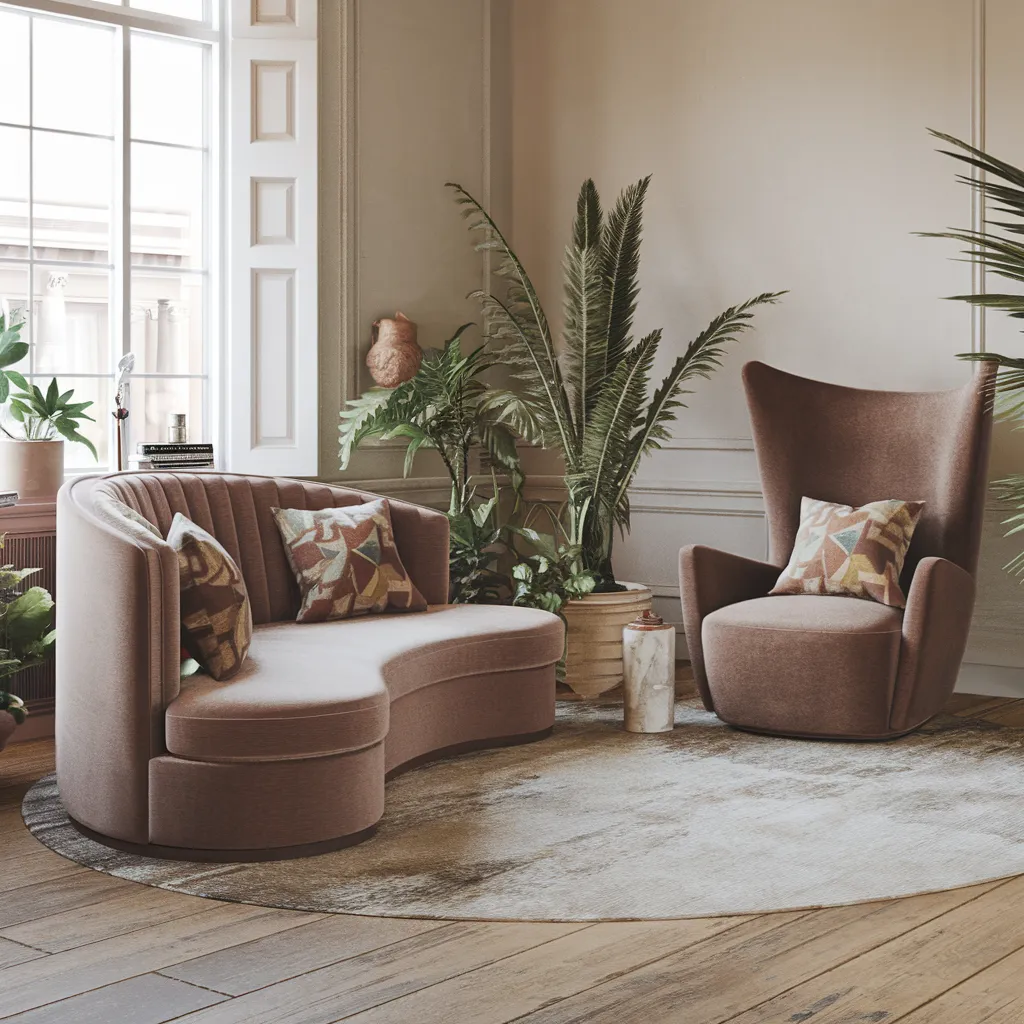
This tranquil seating area features plush curved furniture in warm earth tones, reflecting a soothing transitional design style. Soft beige walls, lush greenery, and subtle geometric pillows enhance a calm, inviting atmosphere, ideal for mindful comfort.
Curved Couches and Layered Lounging: The New Seating Trends
While the four-inch seating rule remains a timeless guideline, there has been a noticeable shift in how people are applying it. Curved sofas, which typically sit lower than traditional styles, are becoming increasingly popular, and designers are embracing the challenge of mixing and matching these pieces with other seating options. High-backed chairs can also create the illusion of height without impacting seating feng shui, as the seat height can remain low while the high back creates layers and visual interest. This trend towards more organic, sculptural forms in seating reflects a broader shift in interior design, where comfort and fluidity are prioritized over rigid rules and conventions.
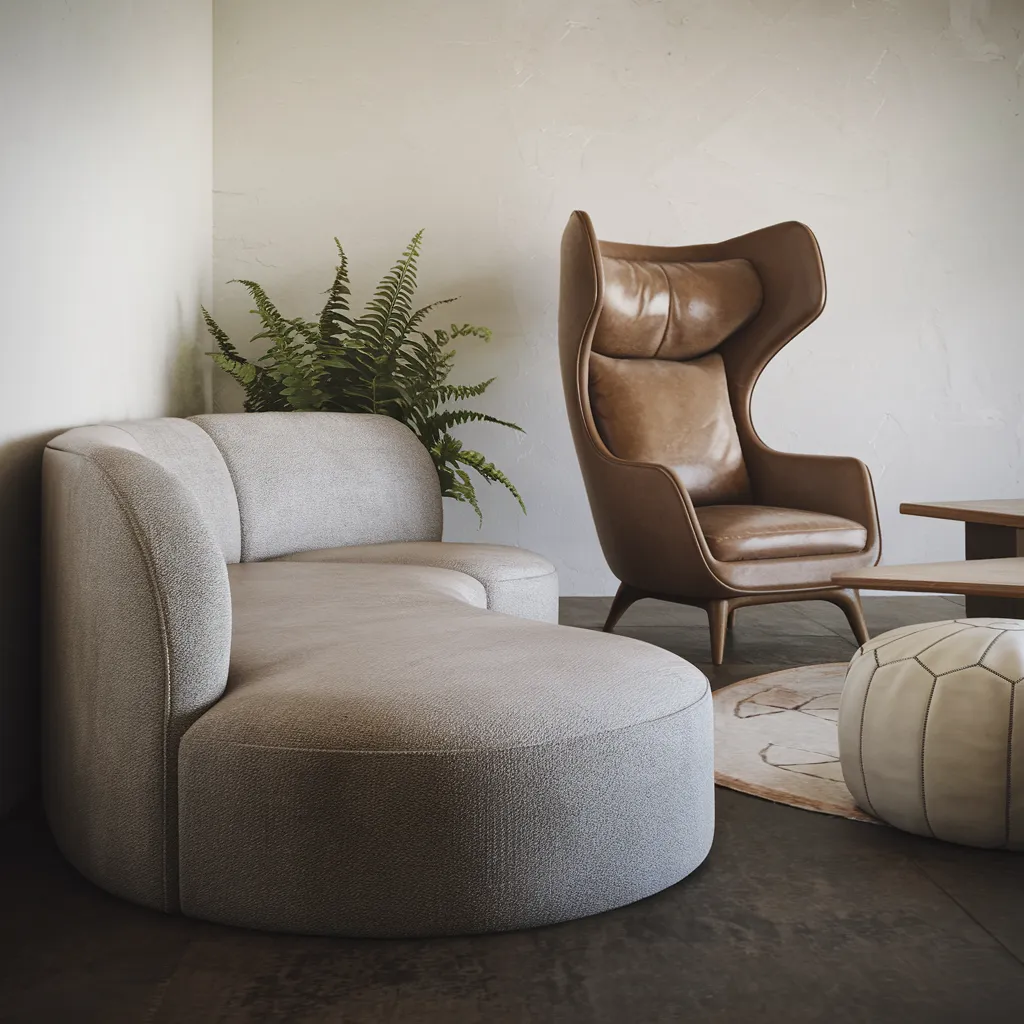
Featuring sleek, organic curves and sophisticated minimalism, this contemporary seating area pairs a soft gray modular sofa with a statement wingback leather chair. The design embraces comfort, space, and proportion, exemplifying intentional seating choices.
Harmonious Heights: Achieving the Perfect Living Room Balance
While the four-inch seating rule is an easy guide to help create the best living room seating arrangement, it’s important to remember that it’s not a strict mandate. Ultimately, the goal is to foster a sense of calm and encourage conversation, and designers may need to adjust their approach based on the unique needs and aesthetics of each space. By thoughtfully considering seating heights, proportions, and the overall flow of the room, designers can create living spaces that strike the perfect balance between visual harmony and functional comfort. Whether adhering to the four-inch rule or intentionally breaking it, the key is to approach each design with a keen eye for detail and a deep understanding of how the elements of a space interact to create a cohesive, inviting atmosphere.
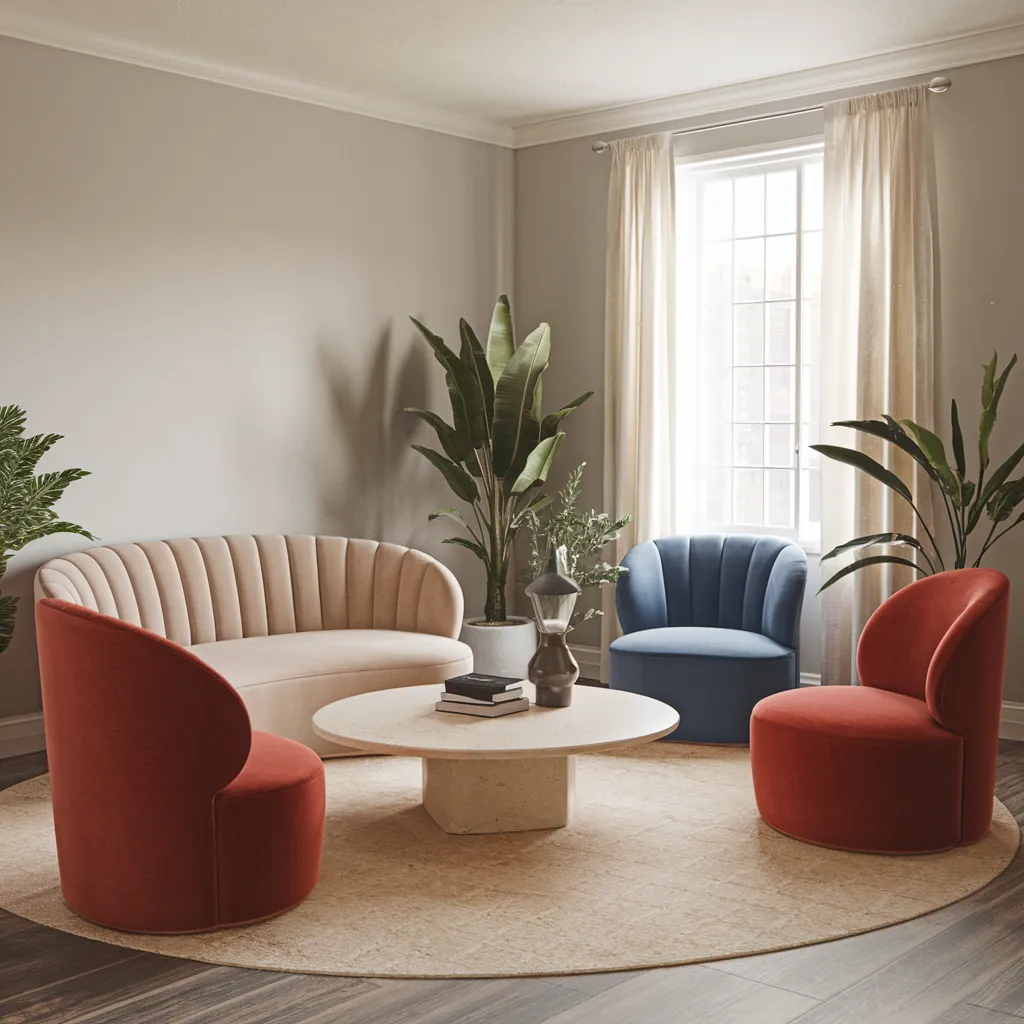
A modern, lively seating arrangement incorporates softly curved furniture in contrasting colors of ivory, rich red, and deep blue, accented by neutral walls and sheer curtains. The space achieves balance through thoughtful spacing, perfectly illustrating the Four-Inch Rule.

